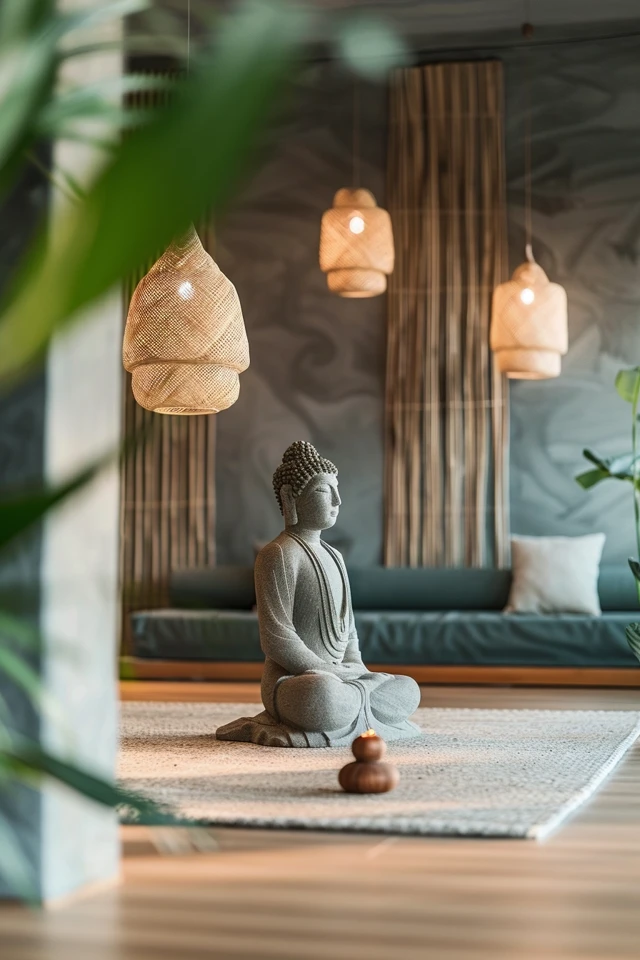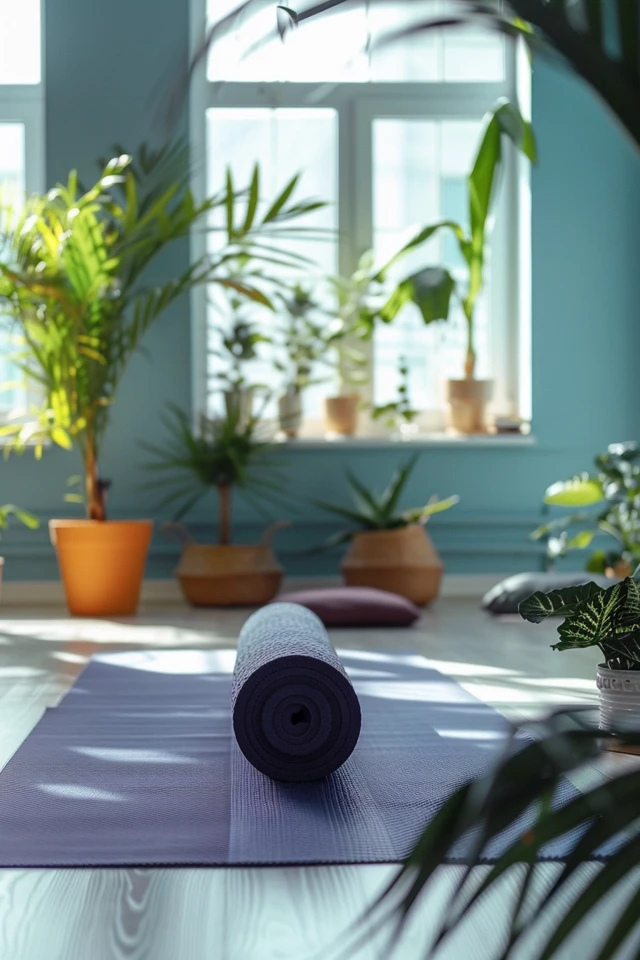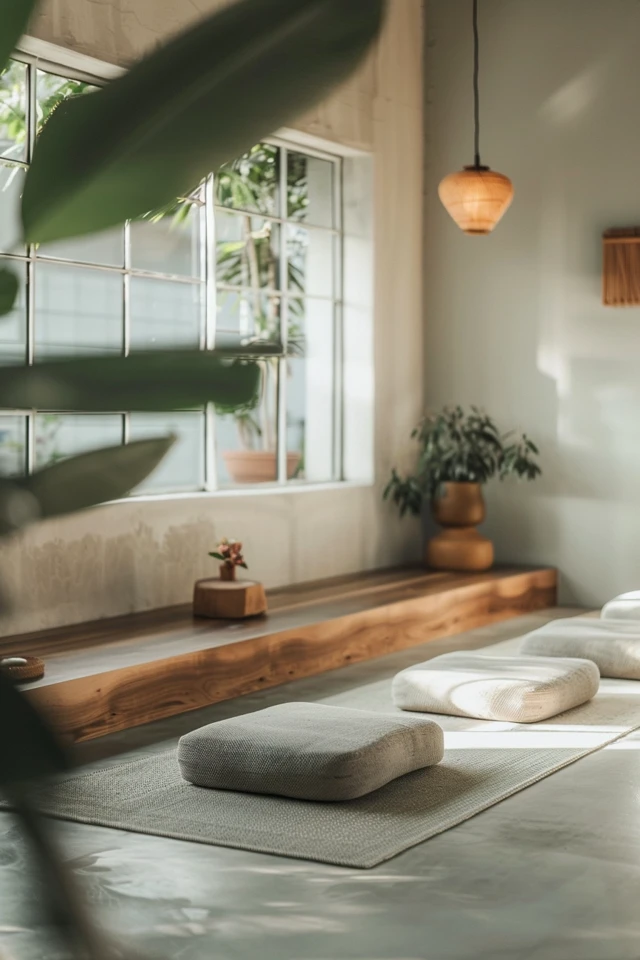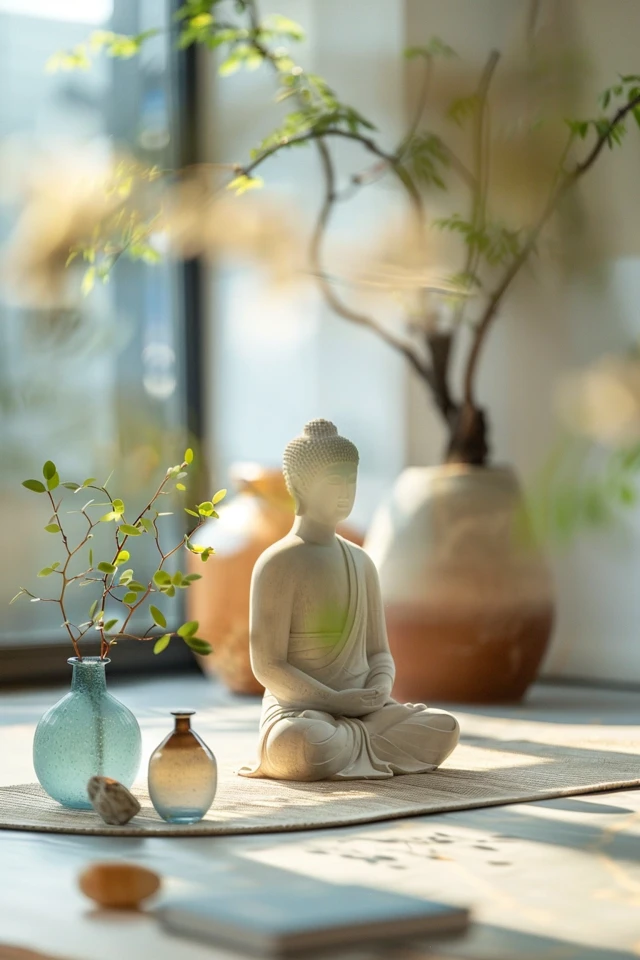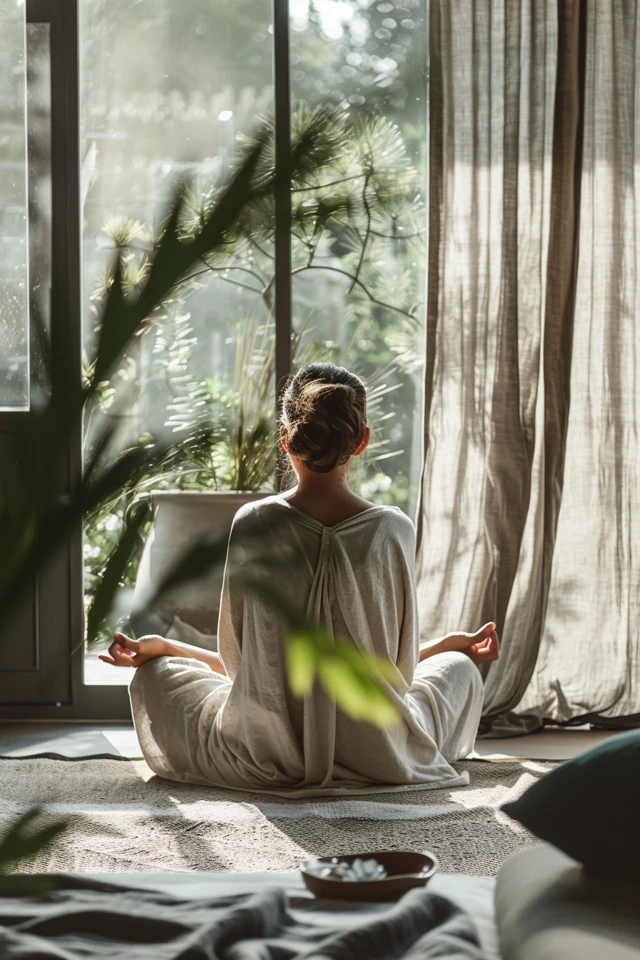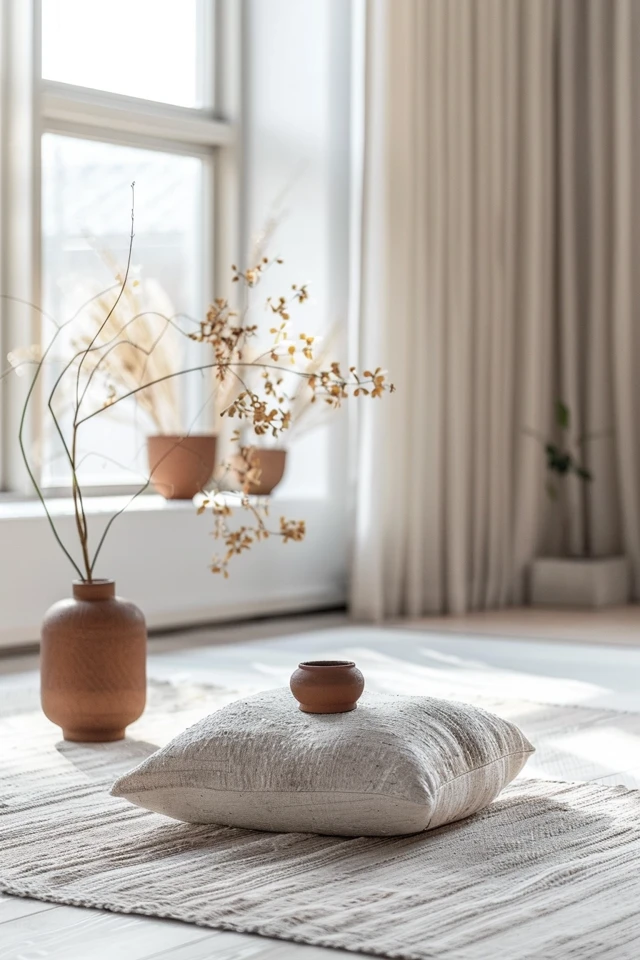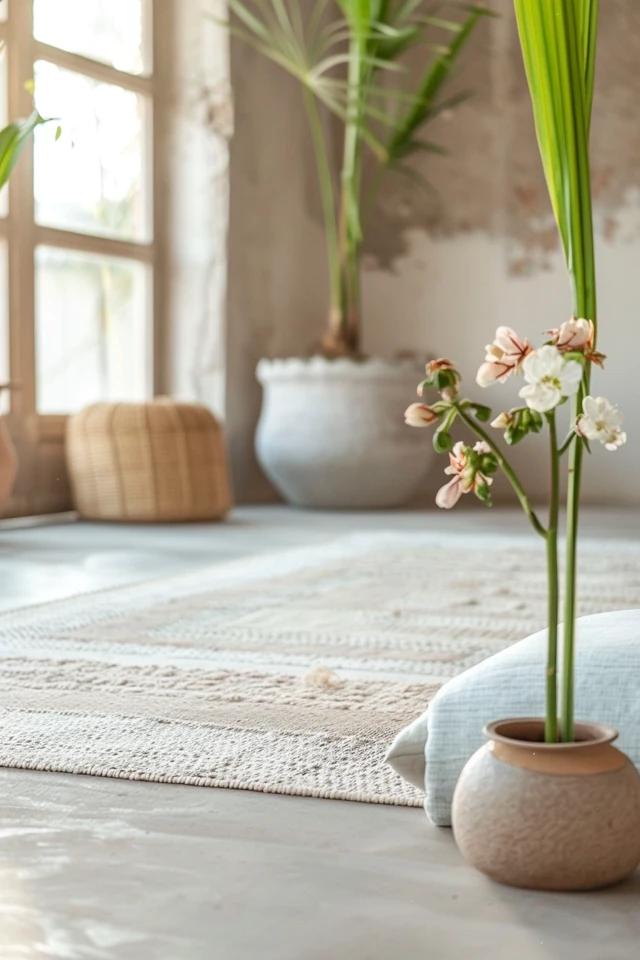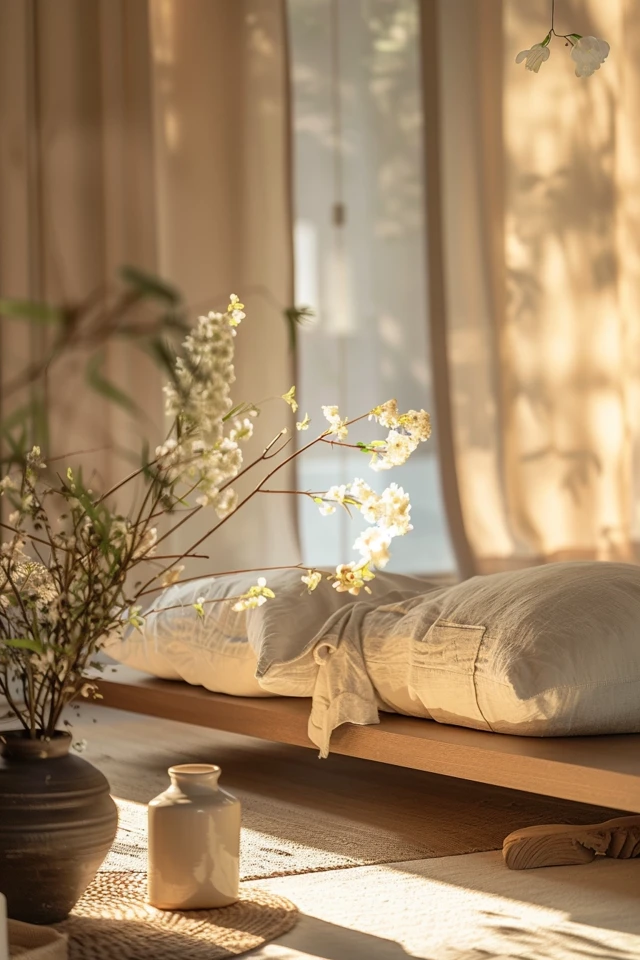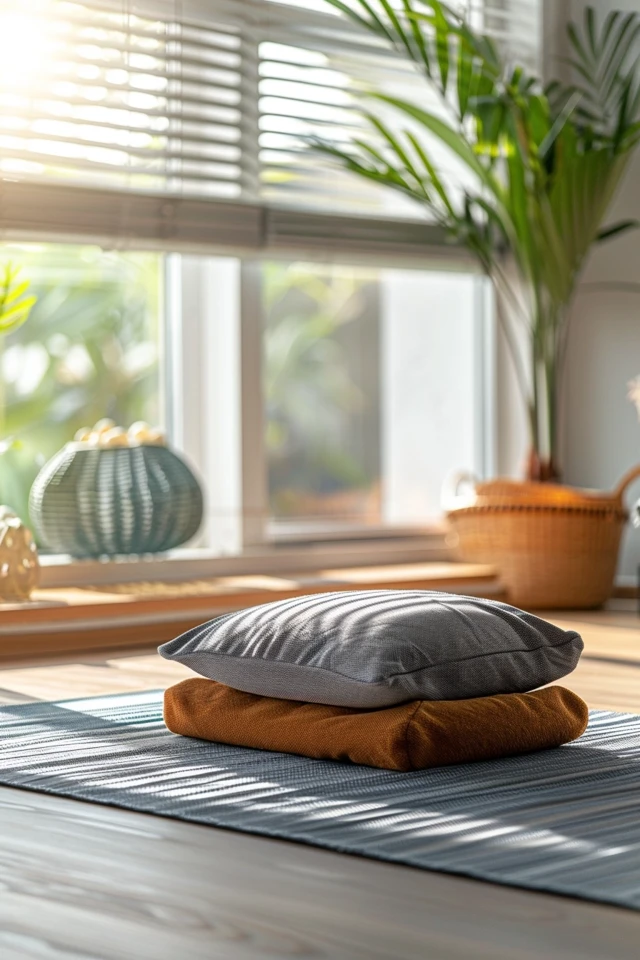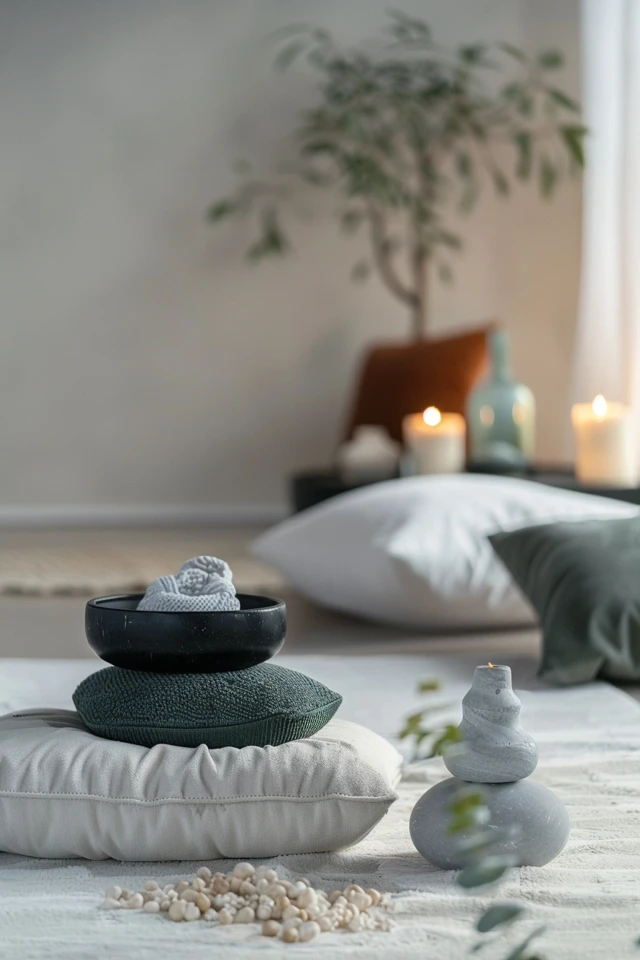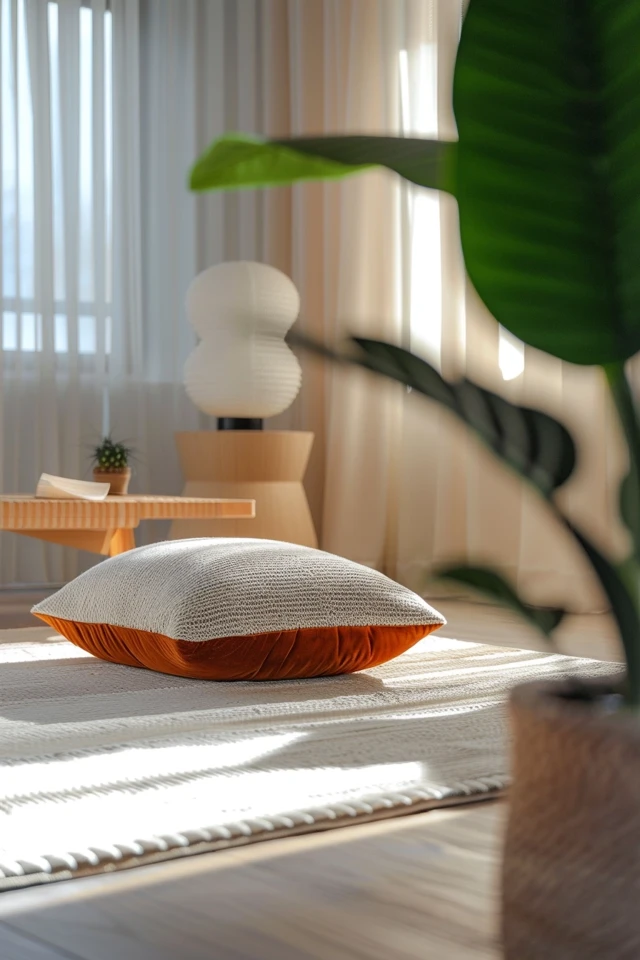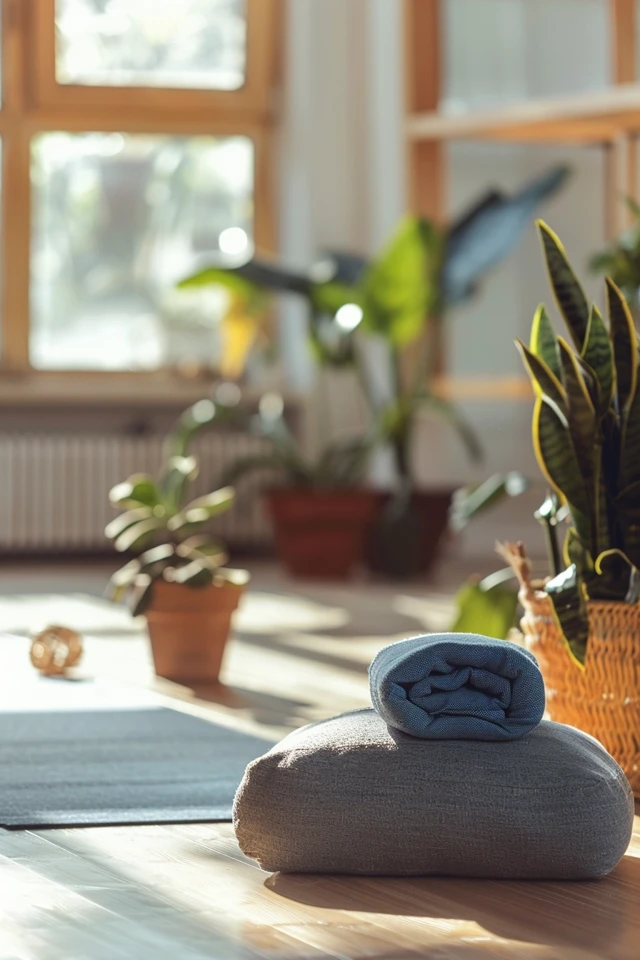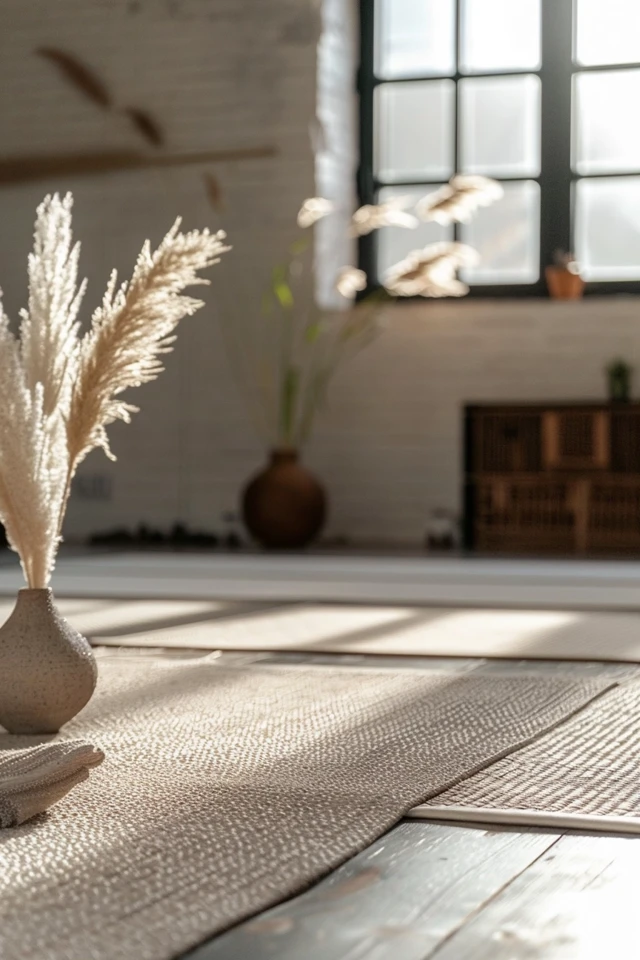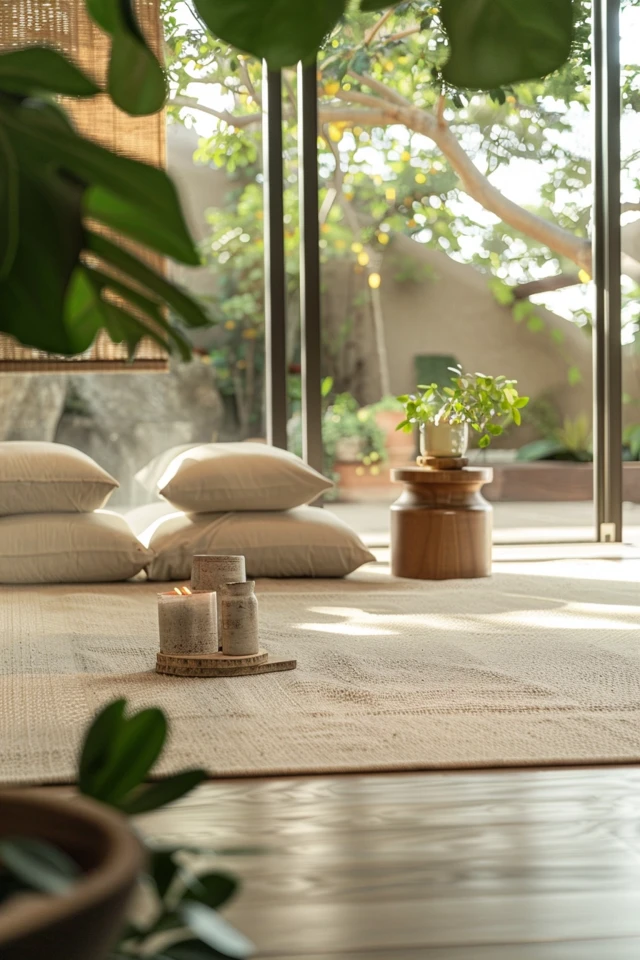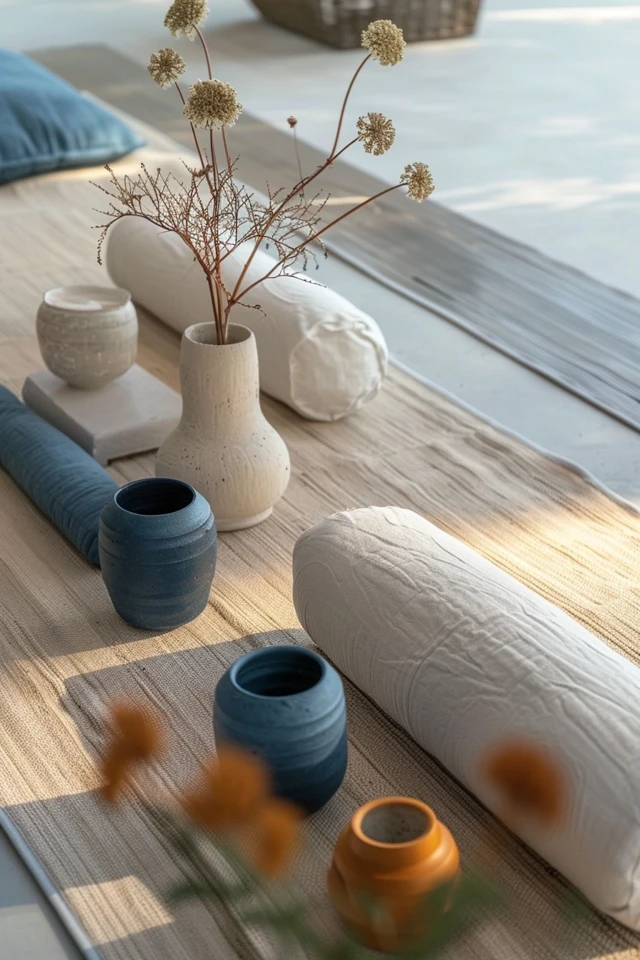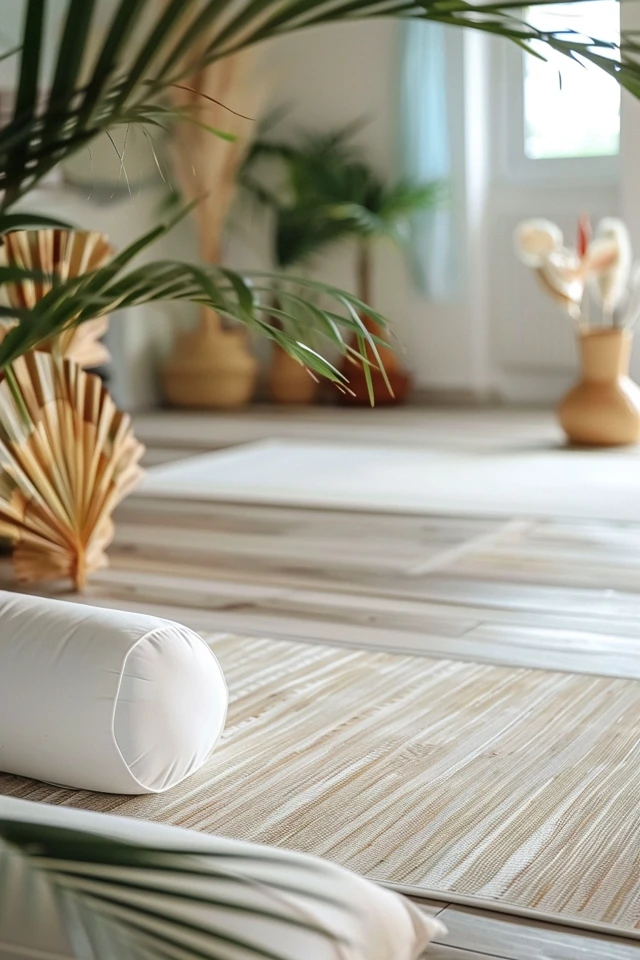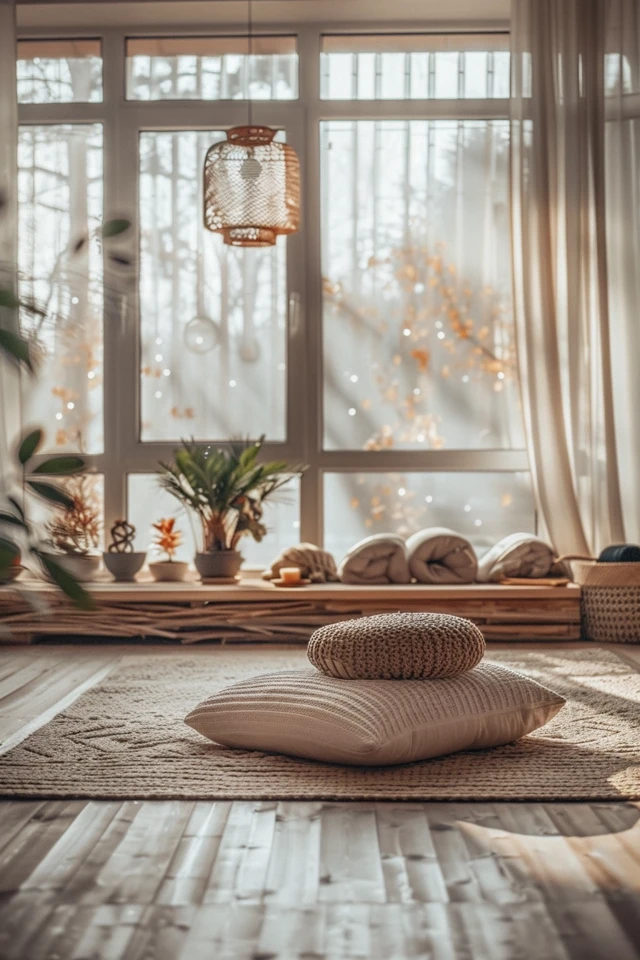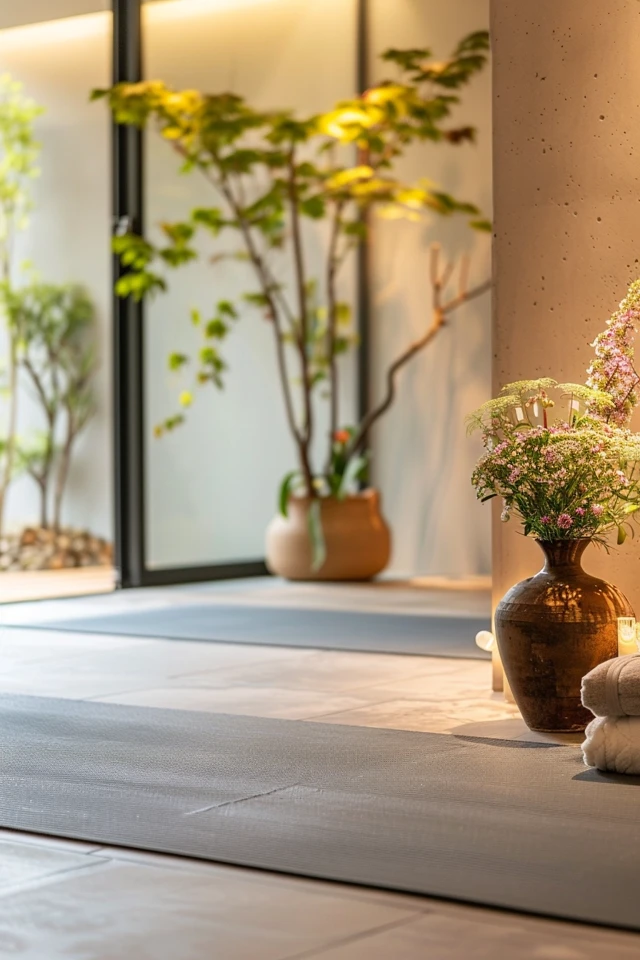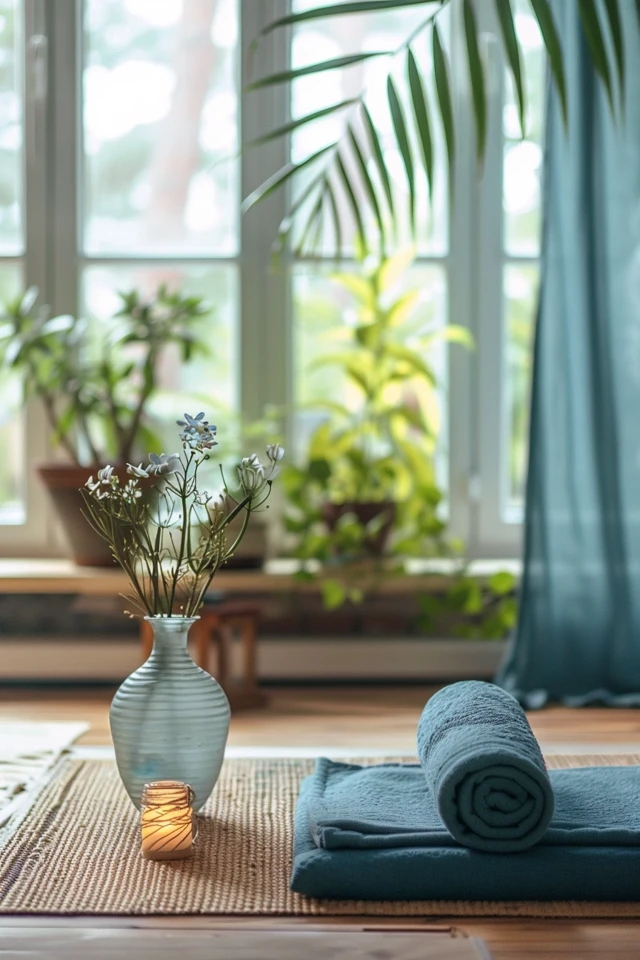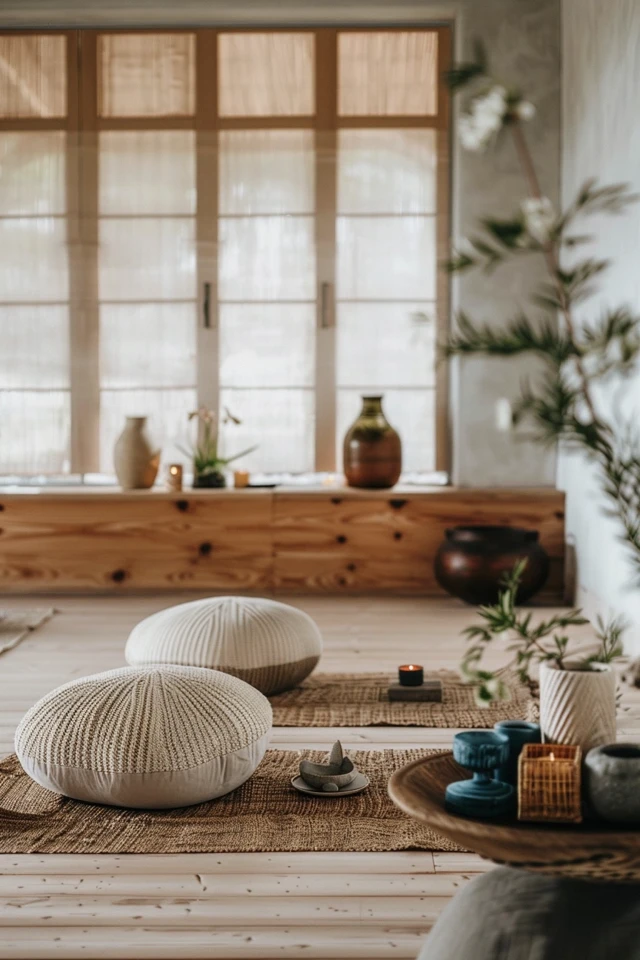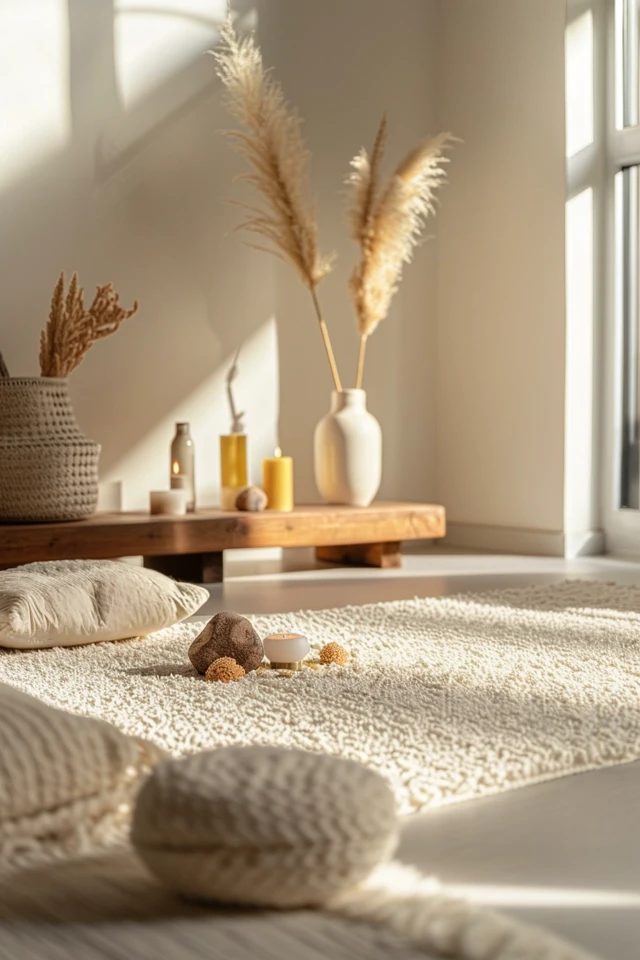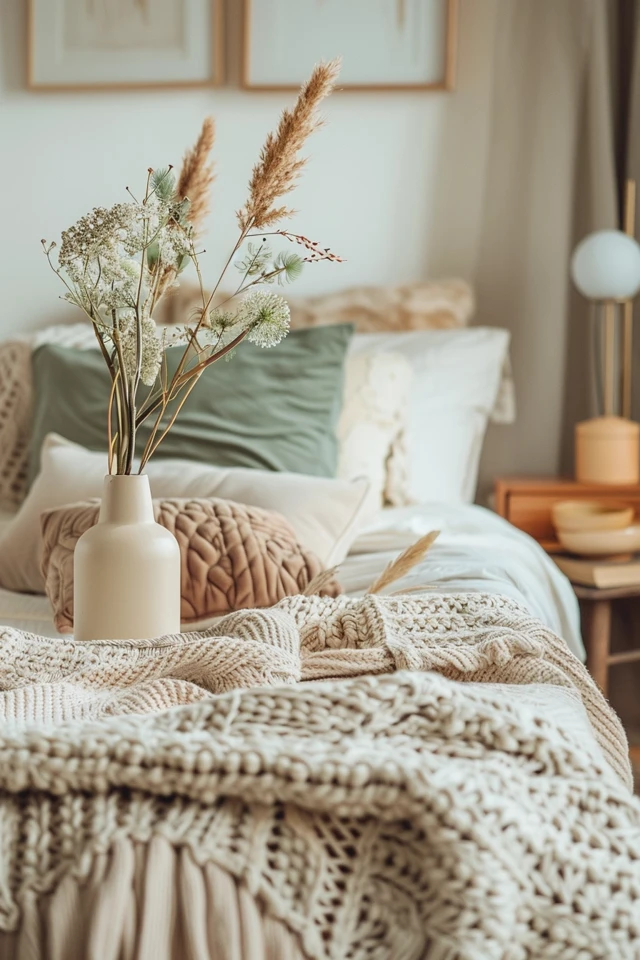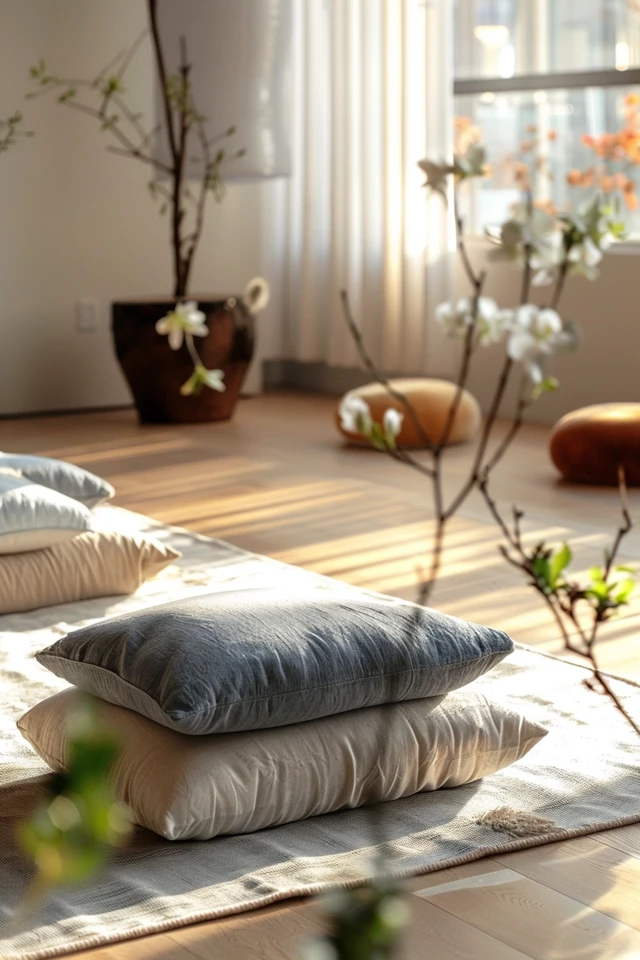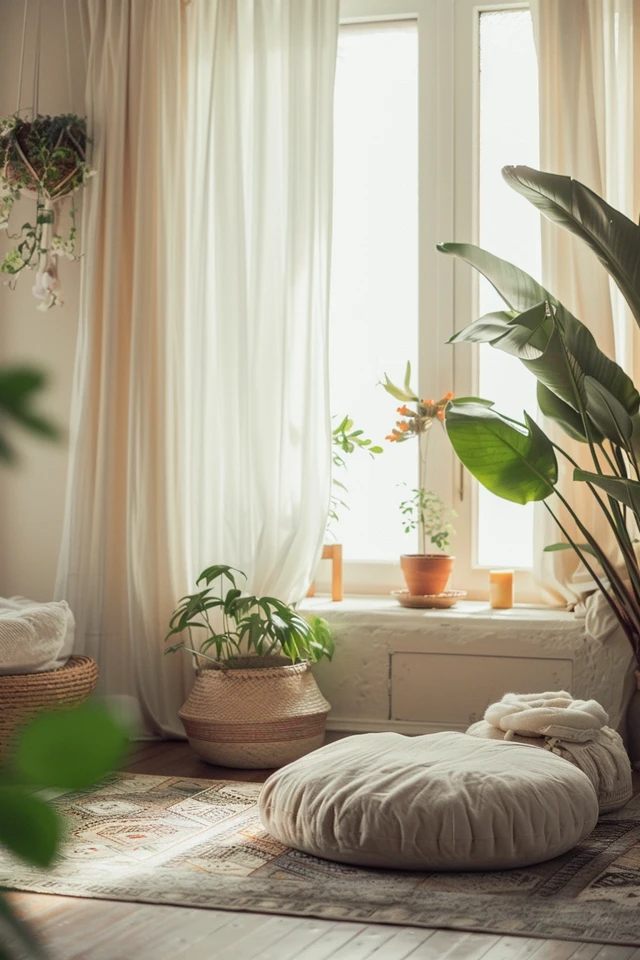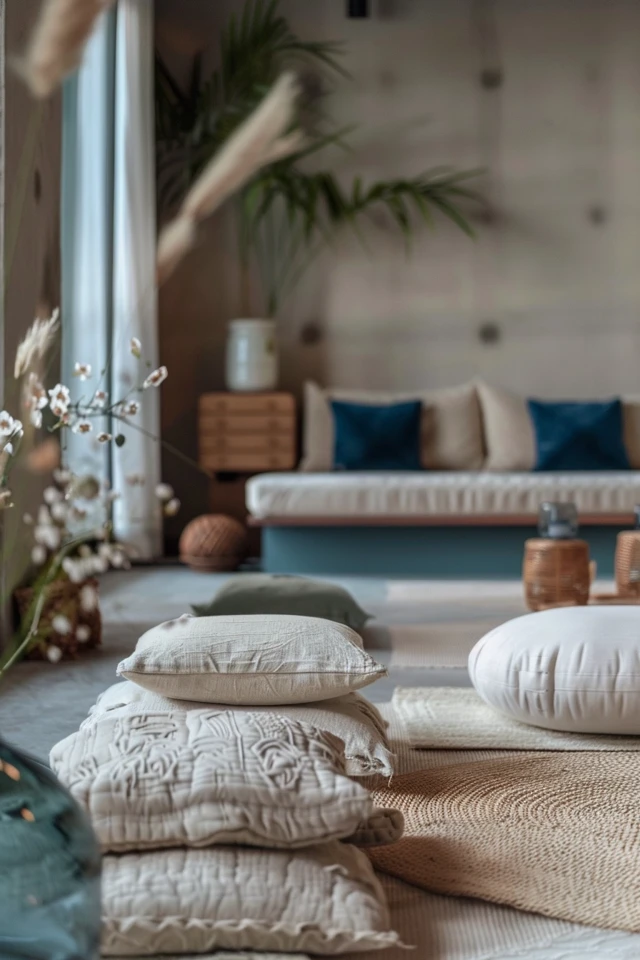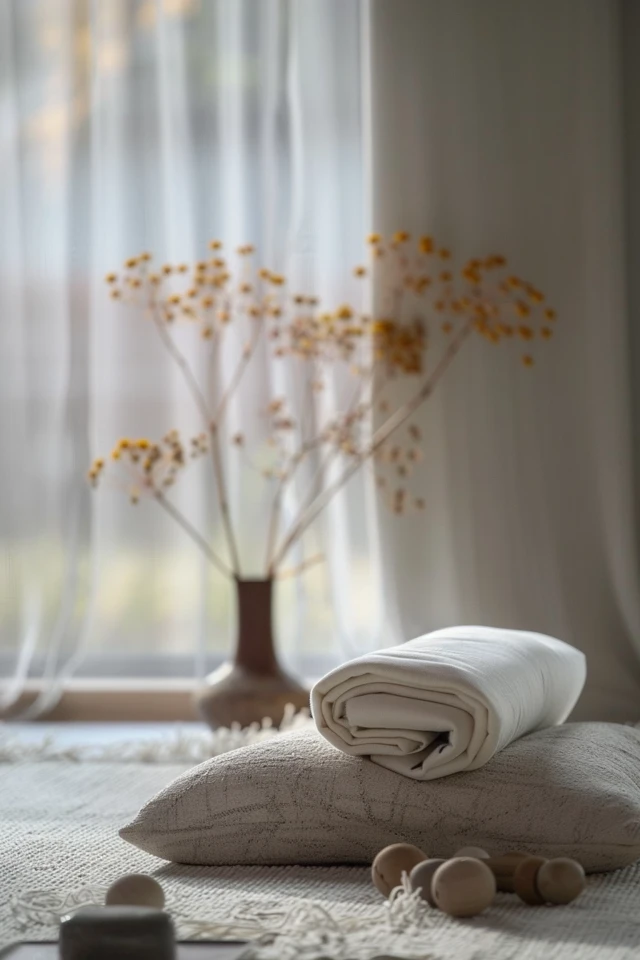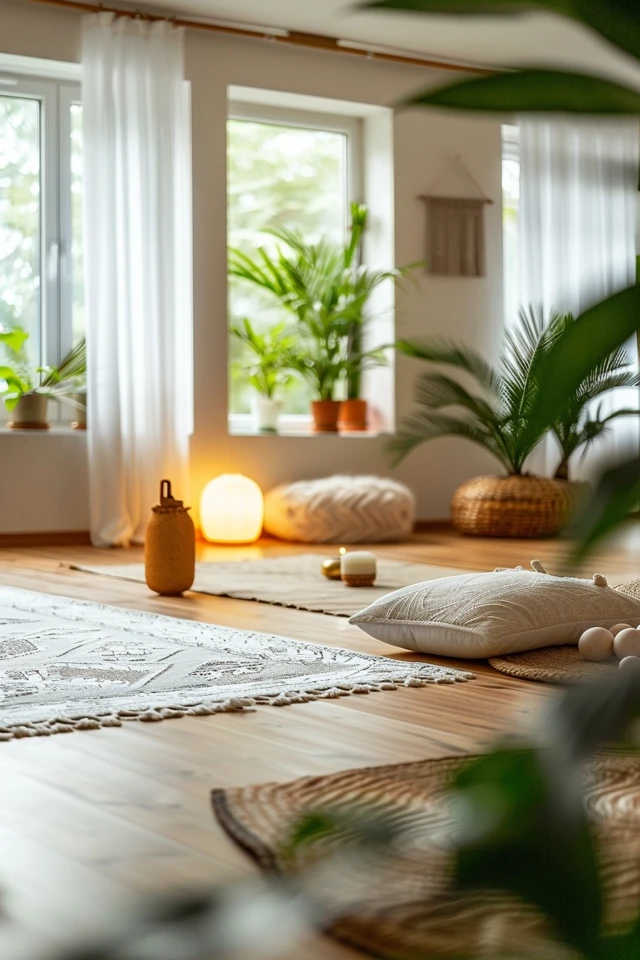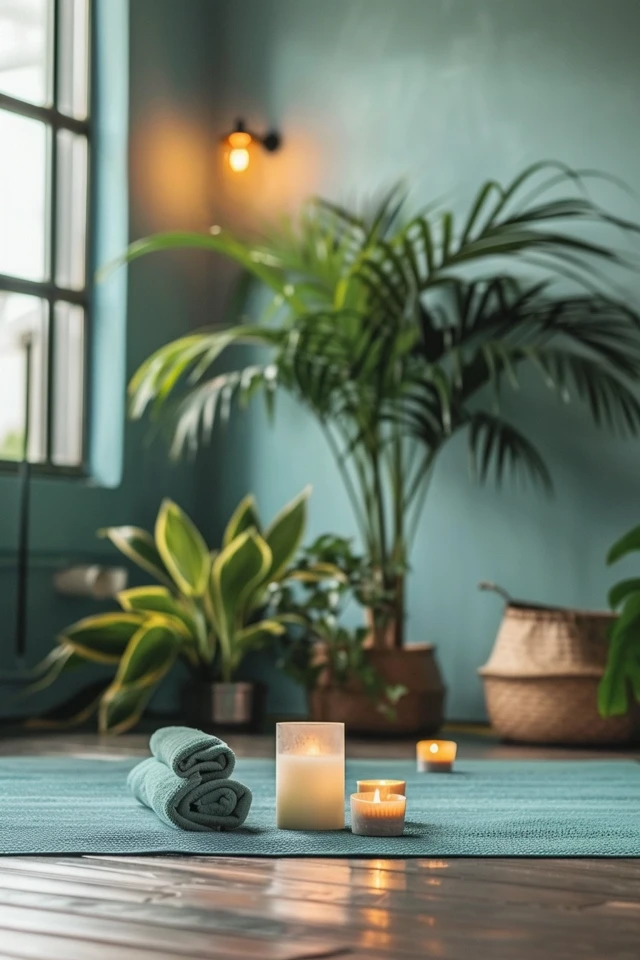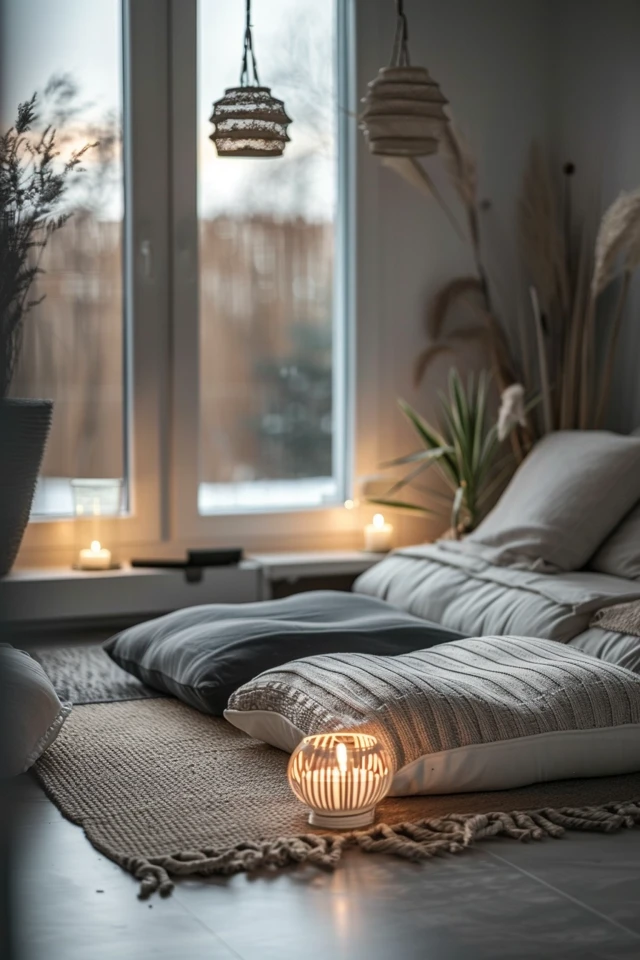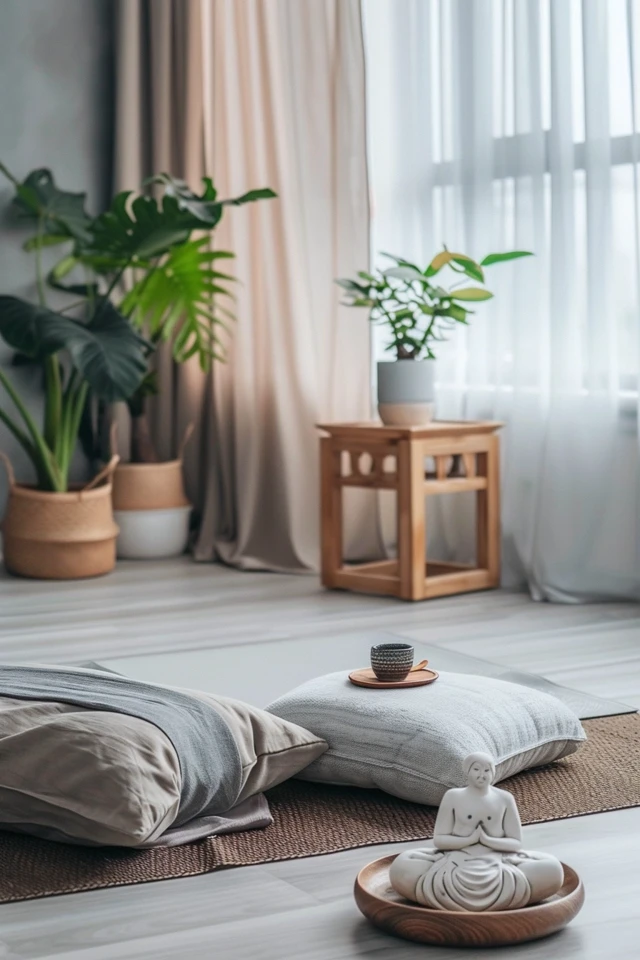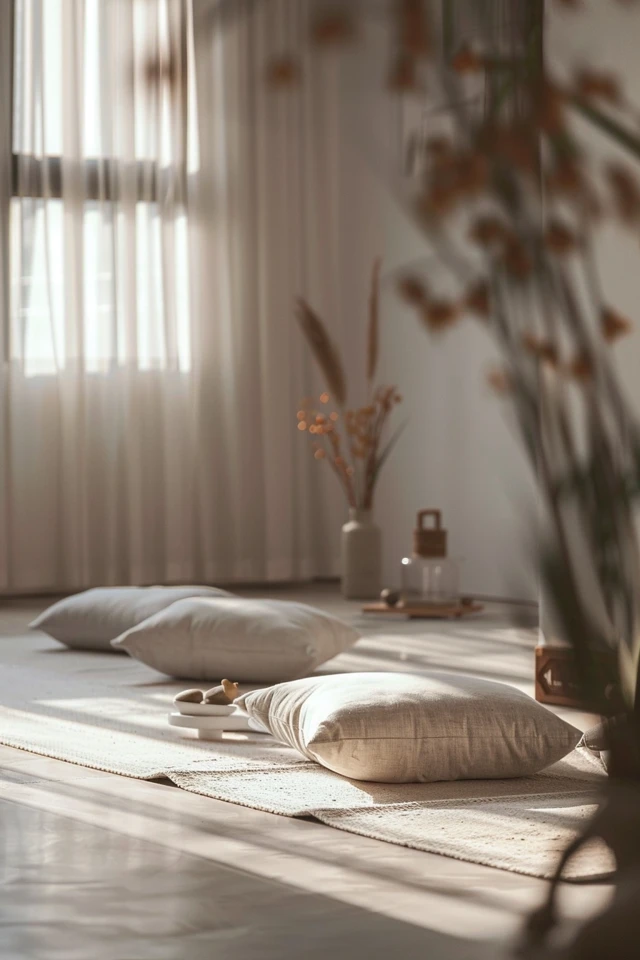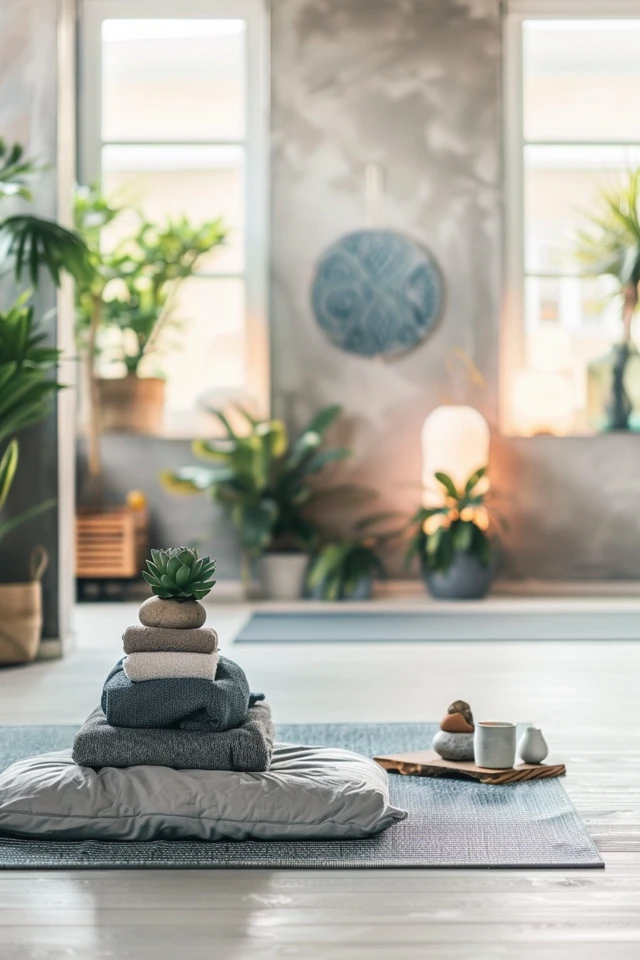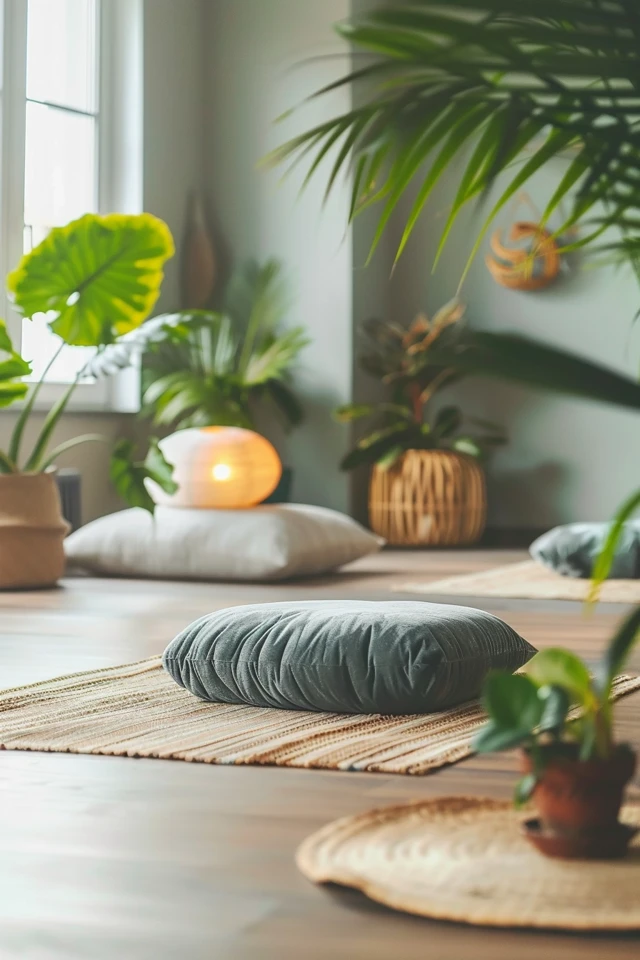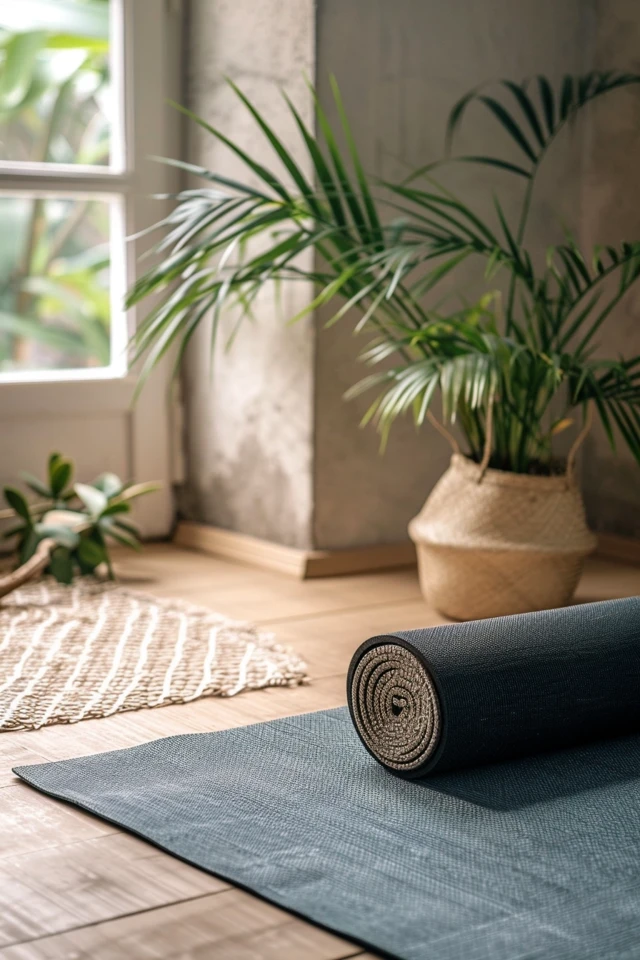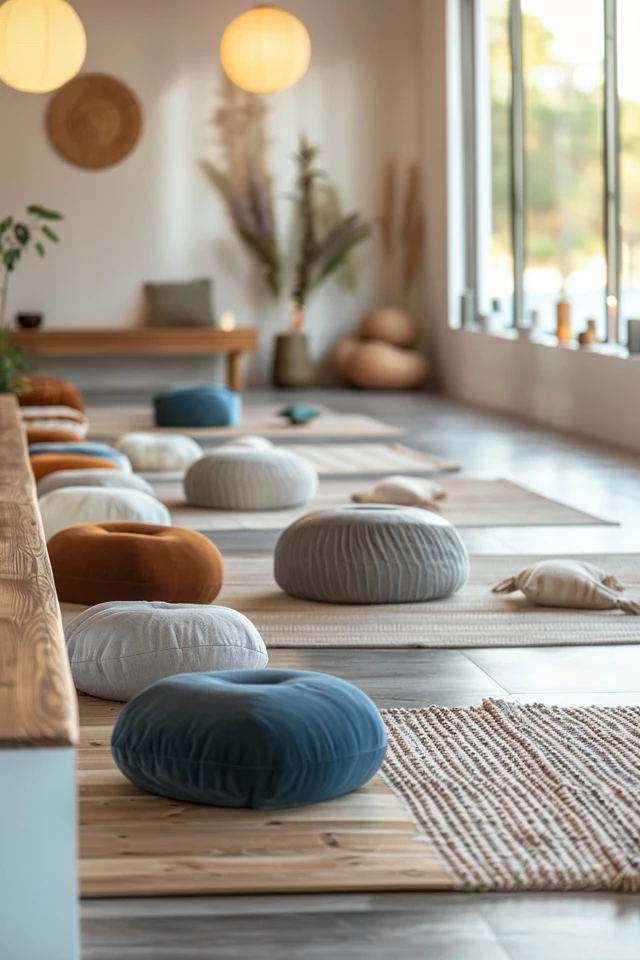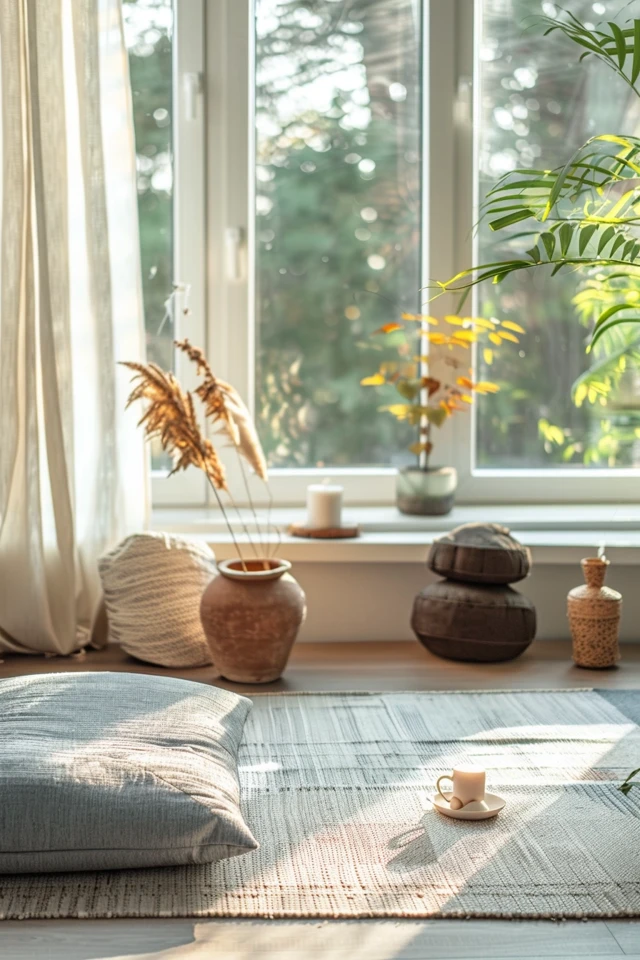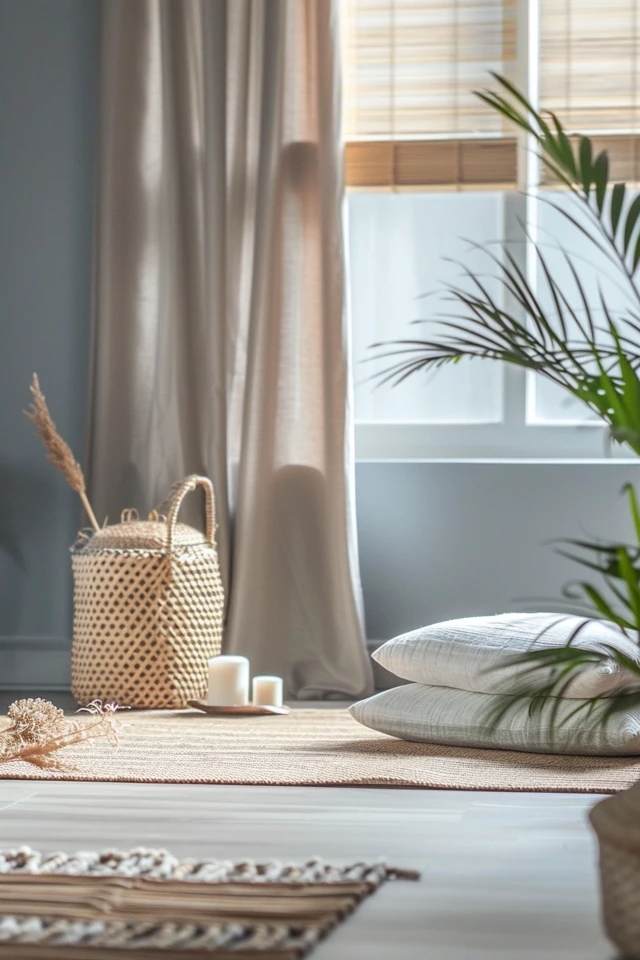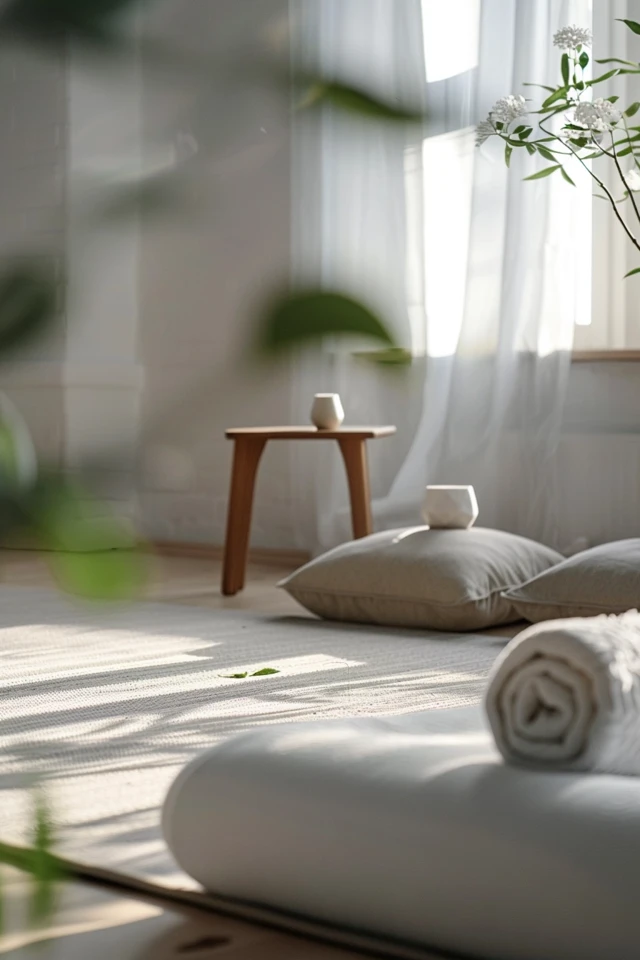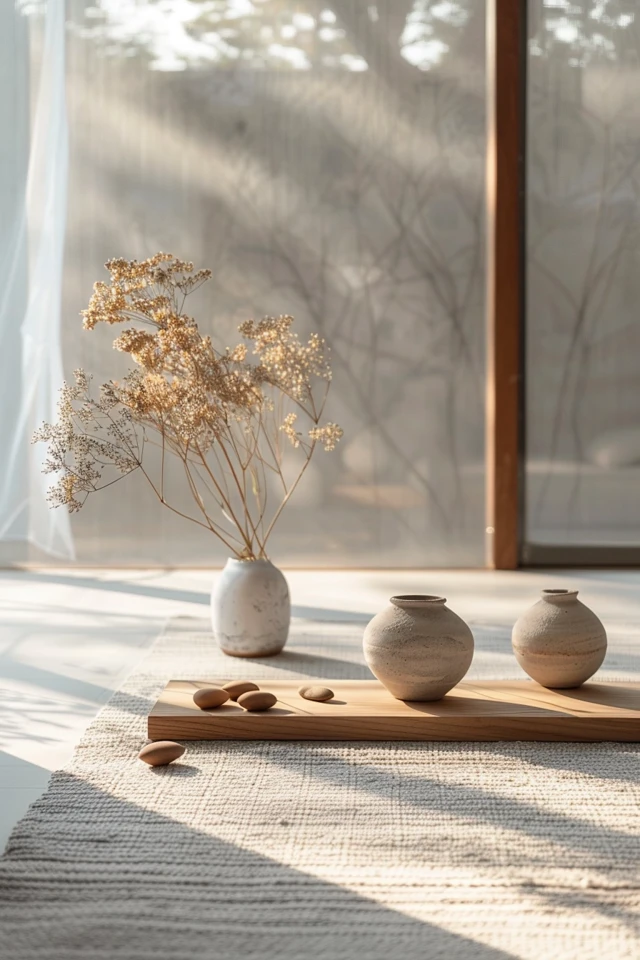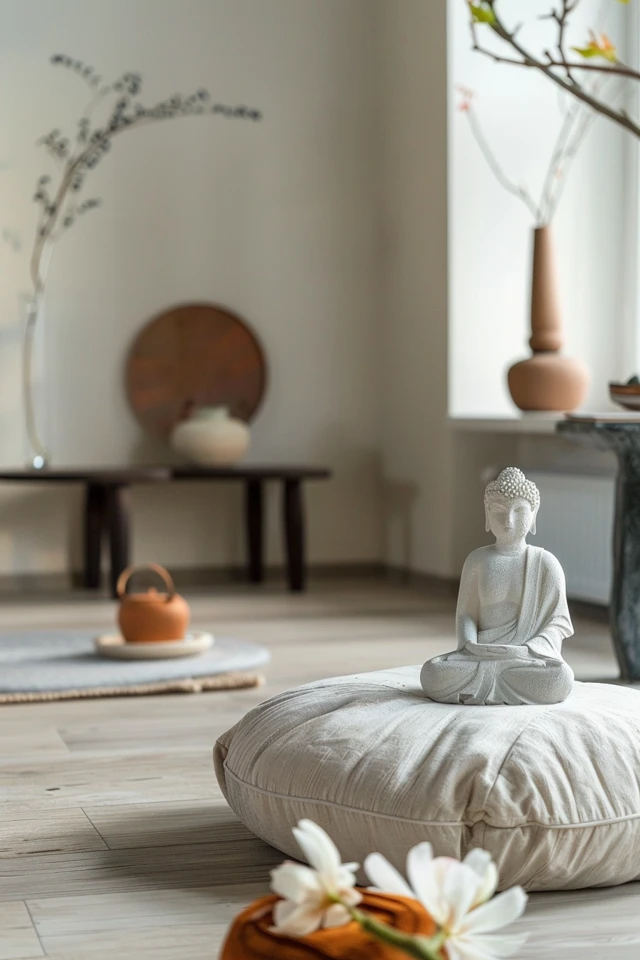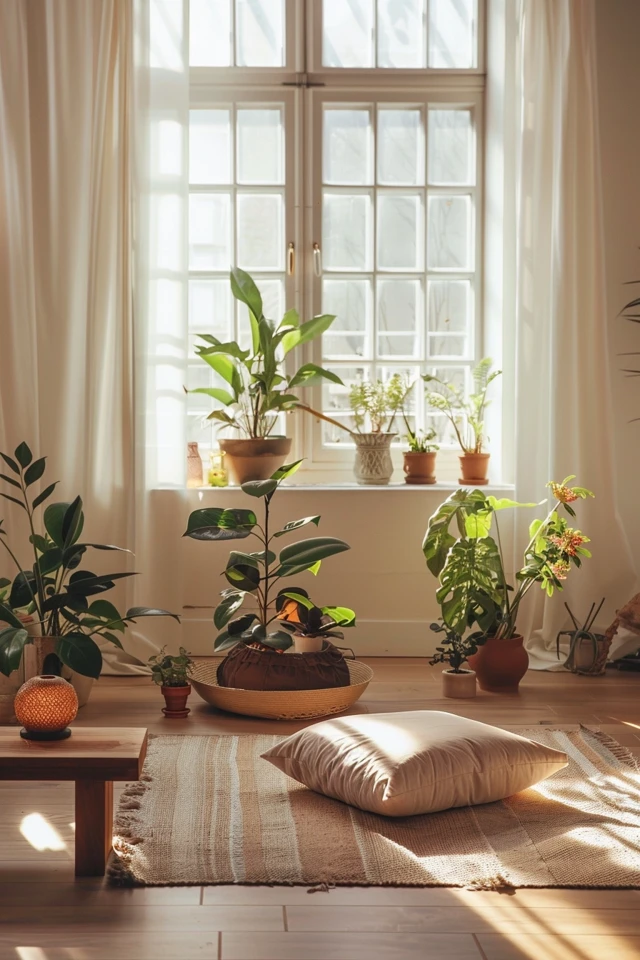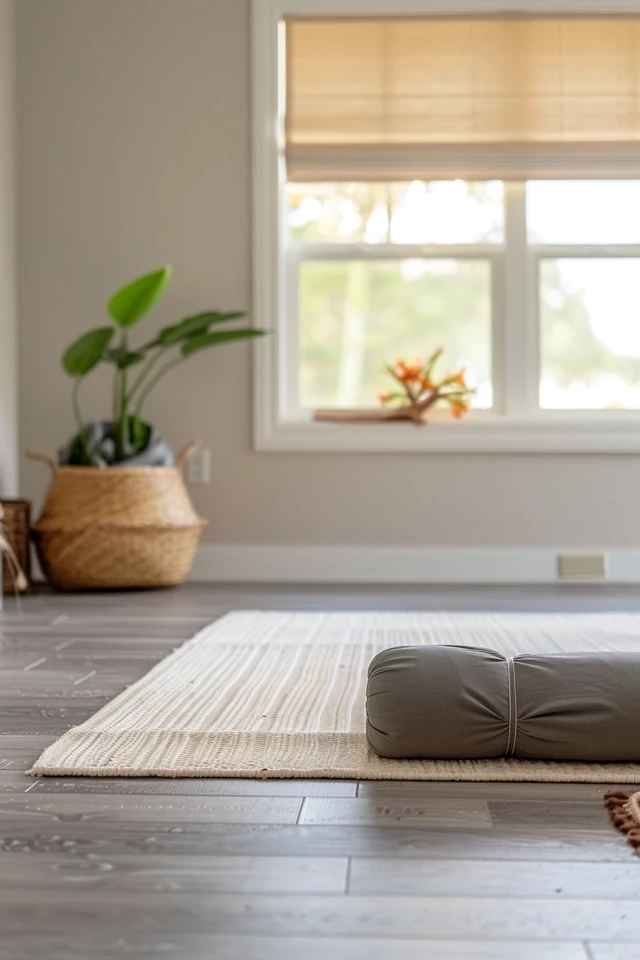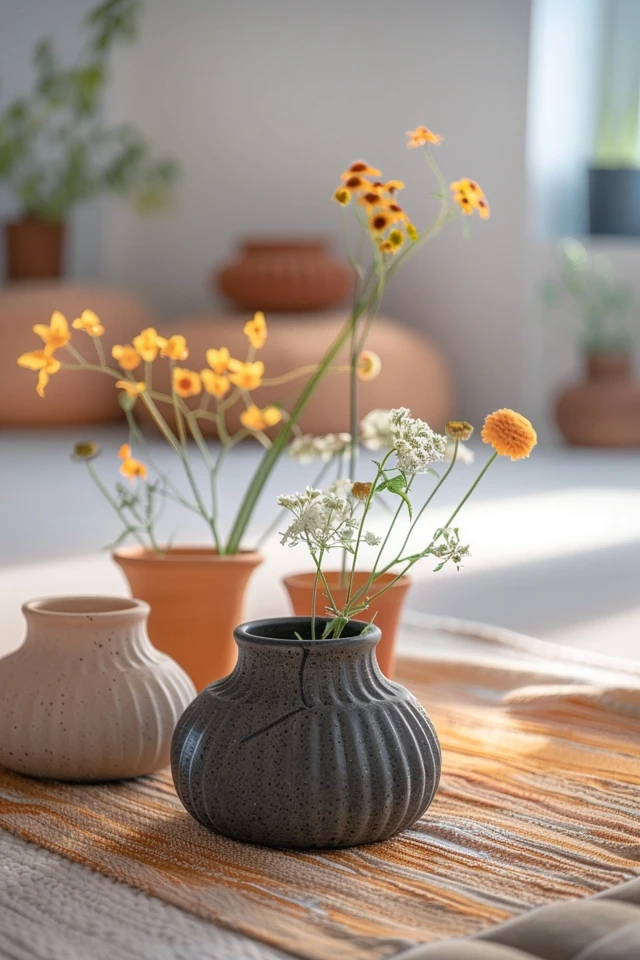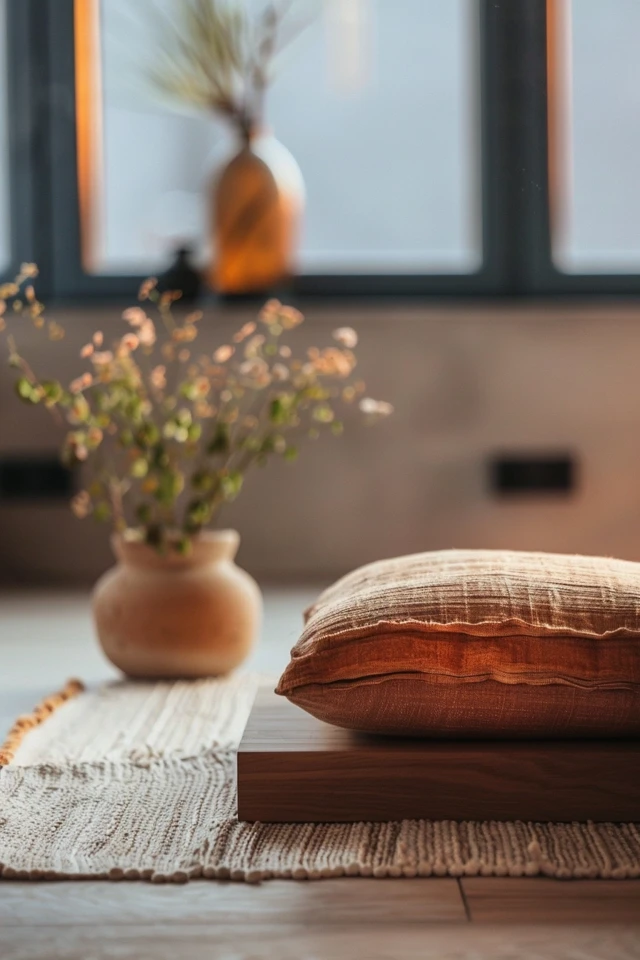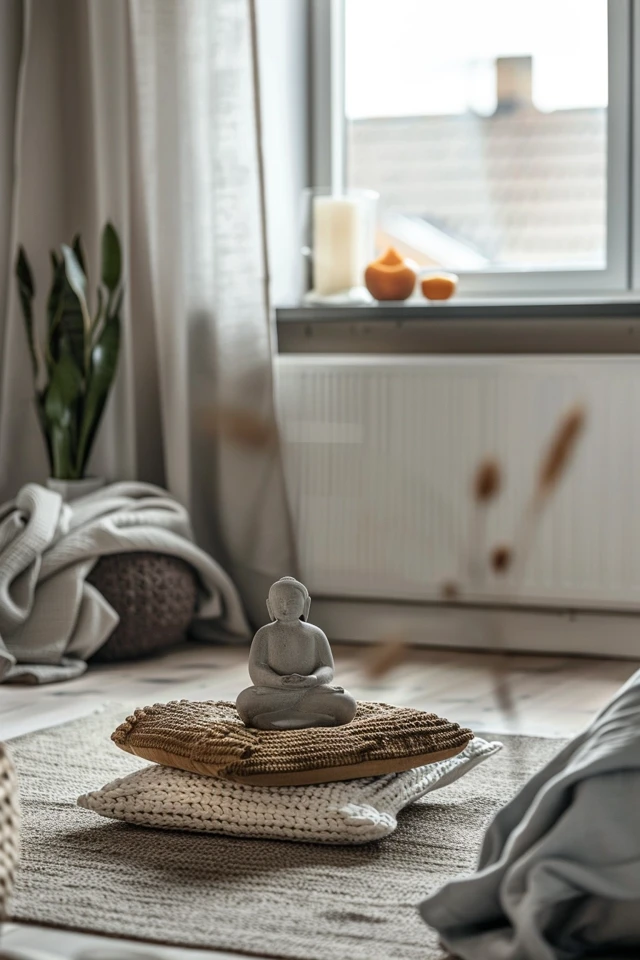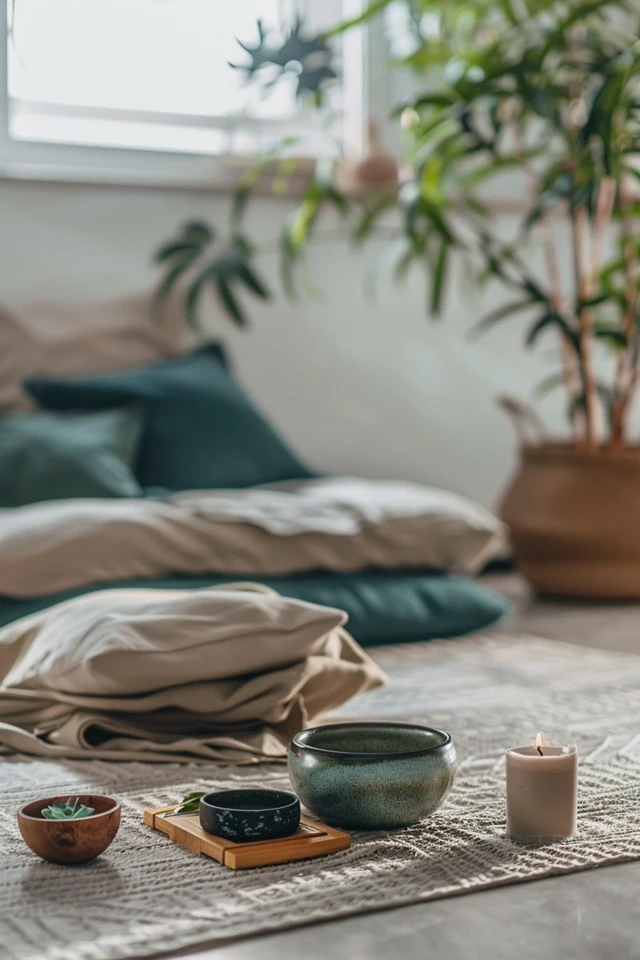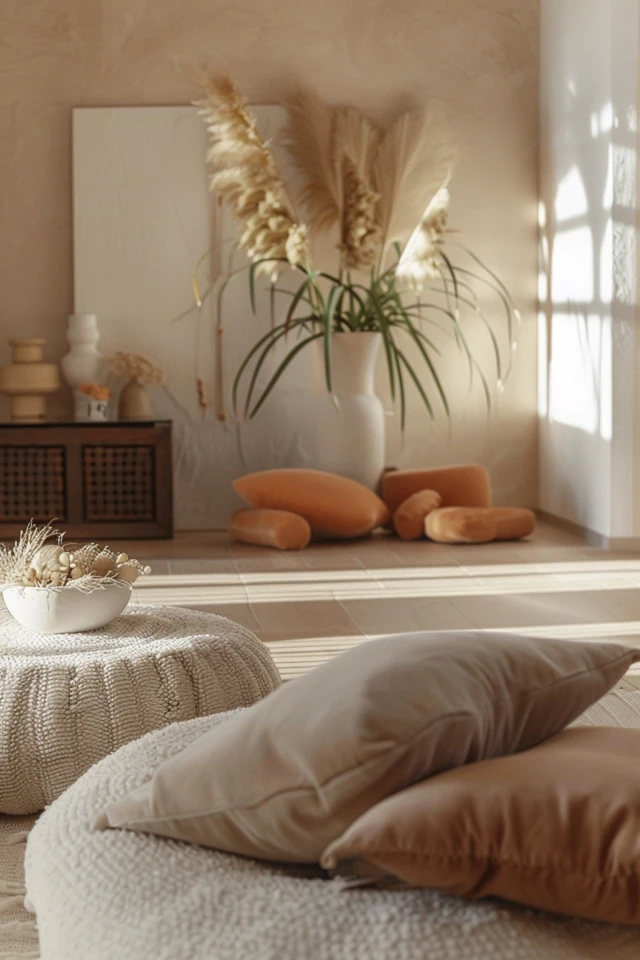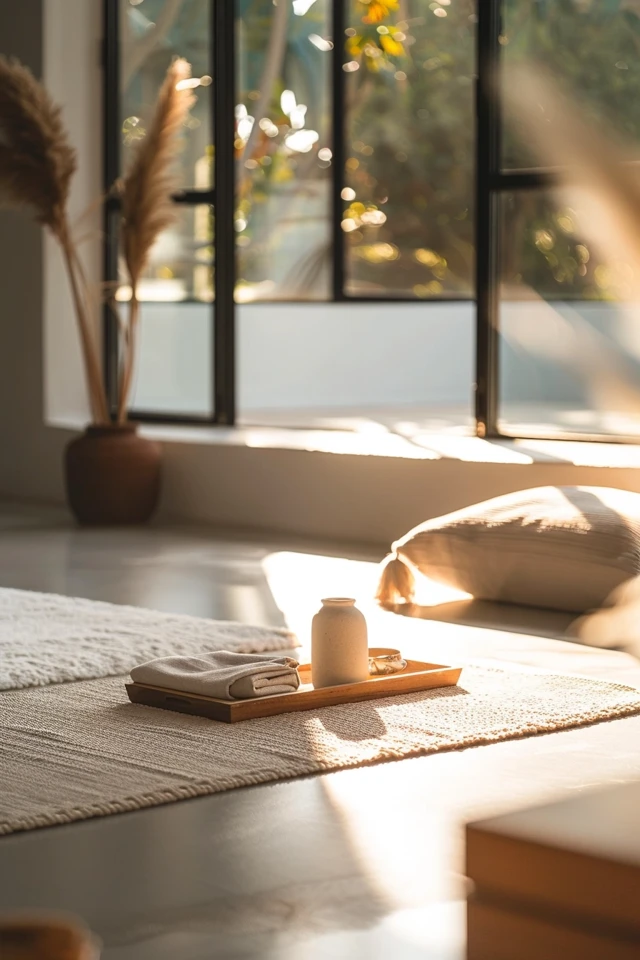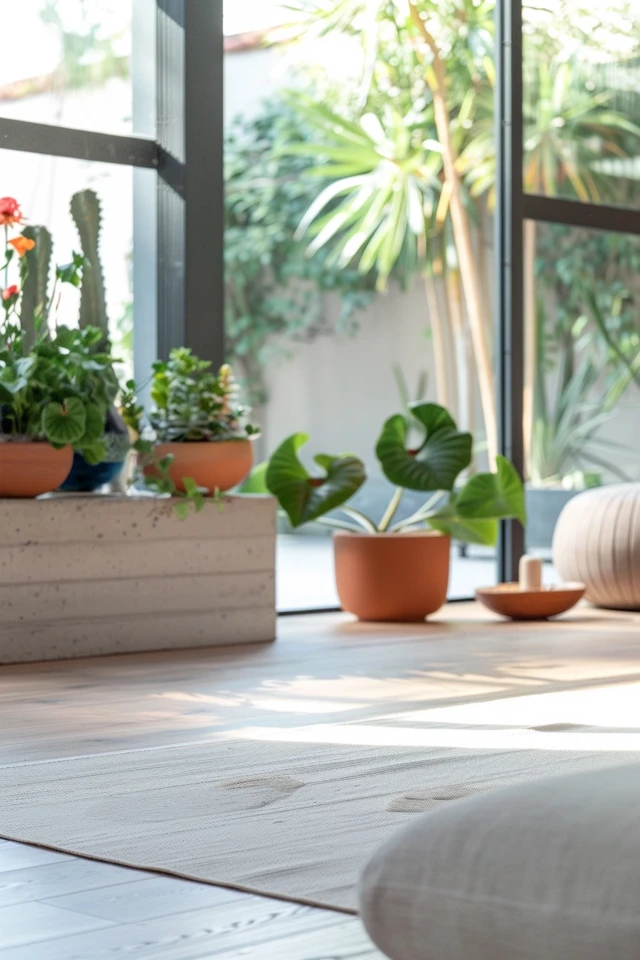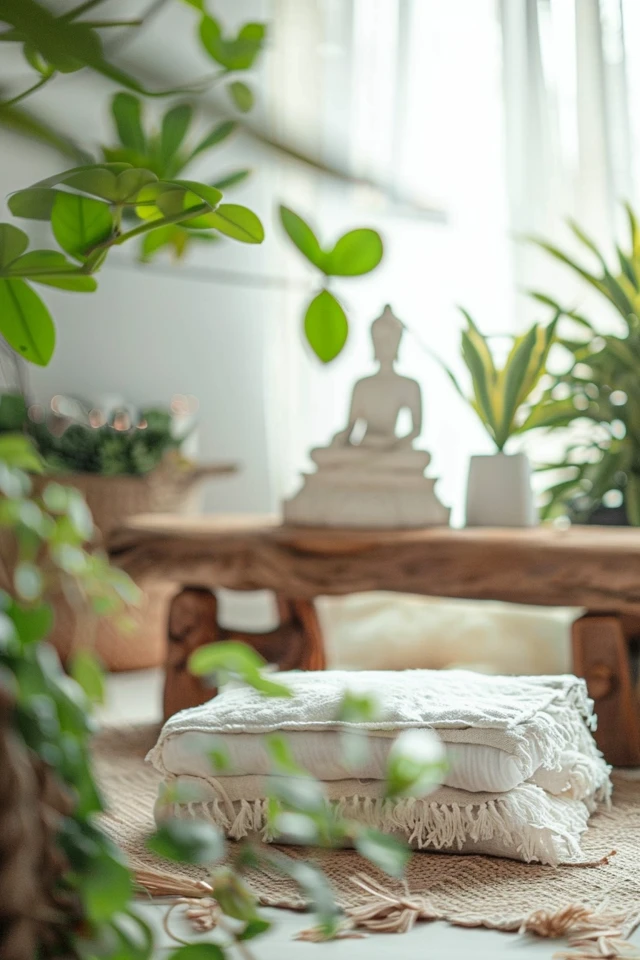Before Reading this Article, Hire Us As Your Designer or Take a Look at My Top 3 Amazon Picks!
If you are looking to blend Amazon's furniture finds with a personalized touch for your space, check out my portfolio, and hire us! You'll get 3 Idea boards, 2 Concept Boards, 2 Realistic Renderings, a Floor Plan, and a Shopping List! Everything's online, plus a 25% discount on your first online interior design project with my Havenly Promo code 4c7441bcfb. With over 2,000 designs since 2017 and top US brand partnerships, your project is in expert hands. US only. Ready to start?
Yoga Vibe Room Ideas for a Calming Retreat
Creating a yoga room that exudes tranquility and promotes relaxation is a dream for many. A dedicated space for yoga practice can enhance your experience, offering a sanctuary for both your body and mind. As an architect and interior designer with expertise in evidence-based design, I’m excited to share some inspiring ideas to help you transform any room into a calming yoga retreat.
Key Takeaways:
- Incorporate natural elements to create a serene atmosphere.
- Choose calming colors and soft lighting to enhance relaxation.
- Use multi-functional furniture to maximize space.
- Add personal touches to make the space uniquely yours.
- Maintain a clutter-free environment to ensure focus and tranquility.
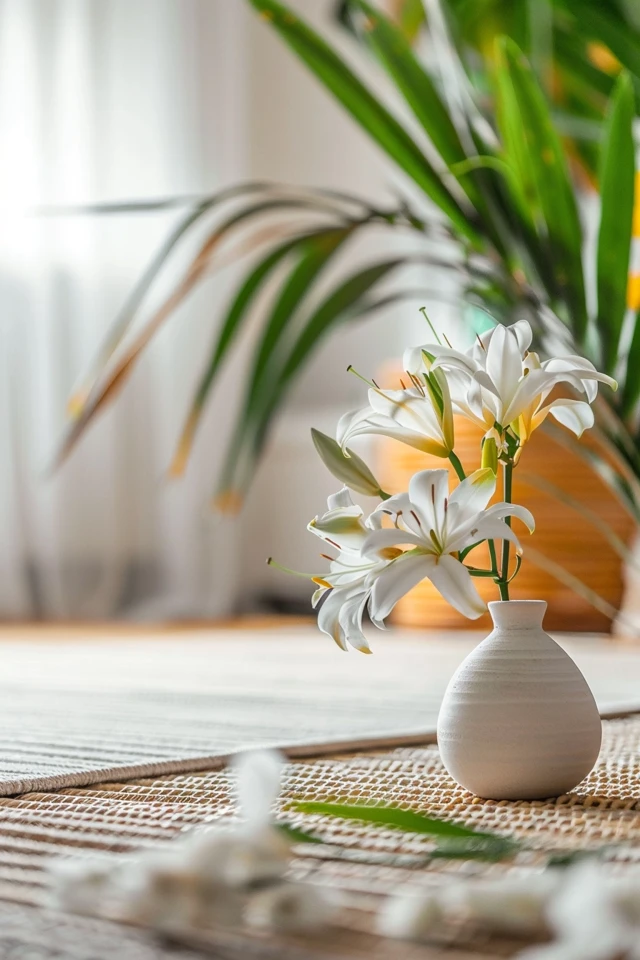
1. Incorporate Natural Elements
One of the most effective ways to create a calming yoga room is by incorporating natural elements. These elements not only enhance the aesthetic appeal of the space but also promote a sense of peace and connection to nature.
Plants: Adding indoor plants is a great way to bring nature indoors. Plants like peace lilies, snake plants, and ferns are excellent choices for a yoga room. They purify the air and add a touch of greenery that is both calming and refreshing.
Natural Light: Maximize natural light by keeping windows unobstructed. Use sheer curtains to diffuse the light, creating a soft and soothing ambiance. If natural light is limited, consider using full-spectrum light bulbs that mimic natural daylight.
Wooden Elements: Incorporate wooden elements such as bamboo flooring, wooden shelves, and furniture to add warmth and texture to the room. Wood has a grounding effect and can make the space feel more inviting and comfortable.
Water Features: A small indoor fountain or water feature can add a calming sound to the room, enhancing the overall sense of tranquility. The sound of flowing water is known to have a soothing effect on the mind.
Natural Scents: Use essential oils or incense with natural scents like lavender, eucalyptus, and sandalwood to create an aromatic atmosphere. Scents can significantly enhance your yoga practice by promoting relaxation and focus.
2. Choose Calming Colors and Soft Lighting
The color scheme and lighting in your yoga room play a crucial role in creating a peaceful environment. Choosing the right colors and lighting can help you relax and focus during your practice.
Calming Colors: Opt for soft, neutral colors like white, beige, and light gray for the walls. These colors create a serene backdrop that helps to calm the mind. You can also incorporate pastel shades like light blue, green, and lavender to add a touch of color without overwhelming the space.
Accent Colors: Use accent colors sparingly to add interest and depth to the room. Shades of blue and green are particularly effective as they are associated with calmness and relaxation. You can incorporate these colors through cushions, rugs, and wall art.
Soft Lighting: Avoid harsh overhead lighting and opt for soft, diffused lighting instead. Use floor lamps, table lamps, and wall sconces with warm light bulbs to create a cozy and inviting atmosphere. Dimmer switches are a great addition as they allow you to adjust the light intensity to suit your mood.
Candles: Incorporate candles into your yoga space for a warm and soothing glow. Flameless LED candles are a safe alternative if you prefer not to use real candles. Place them around the room to create a calming ambiance.
Fairy Lights: String lights or fairy lights can add a magical touch to your yoga room. They provide soft, ambient lighting that enhances the overall atmosphere. Drape them along the walls or ceiling to create a serene and inviting space.
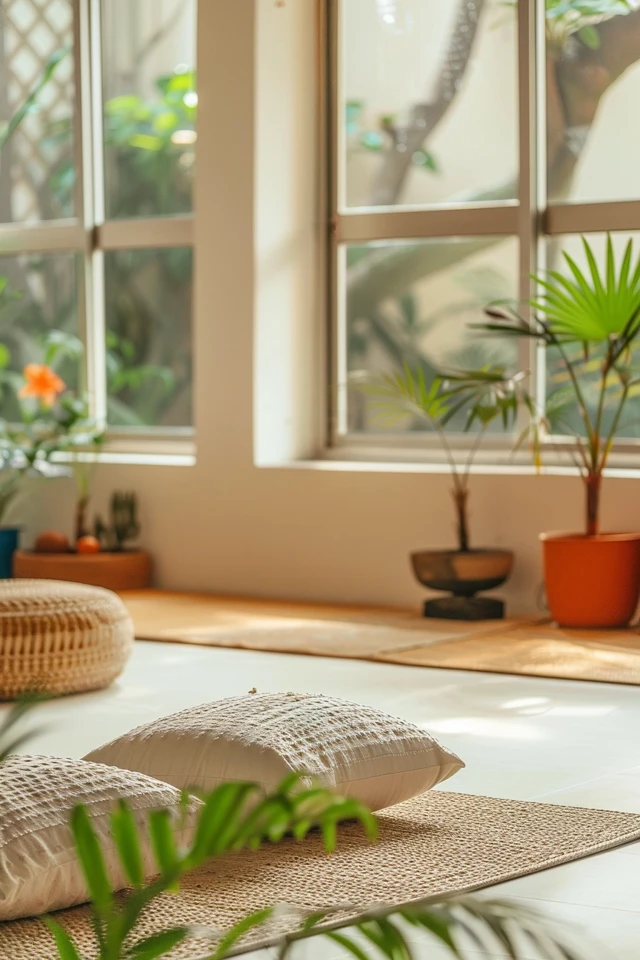
3. Use Multi-Functional Furniture
Multi-functional furniture is essential in a yoga room, especially if you have limited space. Choosing furniture that serves multiple purposes can help you create a functional and clutter-free environment.
Foldable Furniture: Invest in foldable furniture like a foldable yoga mat, portable meditation cushions, and collapsible chairs. These items can be easily stored away when not in use, freeing up space for your yoga practice.
Storage Solutions: Use storage solutions like shelves, cabinets, and baskets to keep your yoga props and accessories organized. Consider using wall-mounted shelves to save floor space and keep the room tidy.
Multi-Purpose Bench: A multi-purpose bench can serve as a seating area, storage space, and even a place to practice certain yoga poses. Look for benches with built-in storage compartments to keep your props and accessories neatly tucked away.
Ottomans and Poufs: Ottomans and poufs can provide additional seating and storage space. They can be easily moved around and used as props during your yoga practice. Choose ones with removable tops for hidden storage.
Mirror: Adding a full-length mirror to your yoga room can help you check your alignment and improve your practice. It also creates the illusion of a larger space, making the room feel more open and airy.
4. Add Personal Touches
Personalizing your yoga room with items that reflect your style and preferences can make the space feel more inviting and comfortable. Adding personal touches can also enhance your connection to the space, making it a true sanctuary.
Wall Art: Decorate the walls with artwork that inspires you. This can include paintings, posters, or tapestries with calming images or motivational quotes. Choose pieces that resonate with you and create a positive atmosphere.
Photographs: Display photographs of loved ones, nature scenes, or places that hold special meaning to you. Personal photos can add a sense of warmth and familiarity to the space.
Textiles: Incorporate textiles like cushions, rugs, and throws in colors and patterns that you love. These items add comfort and coziness to the room, making it a welcoming place to practice yoga.
Personal Altar: Create a personal altar with items that hold special significance to you. This can include candles, crystals, statues, or other meaningful objects. An altar can serve as a focal point for meditation and reflection.
Music and Sound: Incorporate music and sound into your yoga practice with a Bluetooth speaker or sound system. Create playlists with calming music, nature sounds, or guided meditations to enhance your practice.
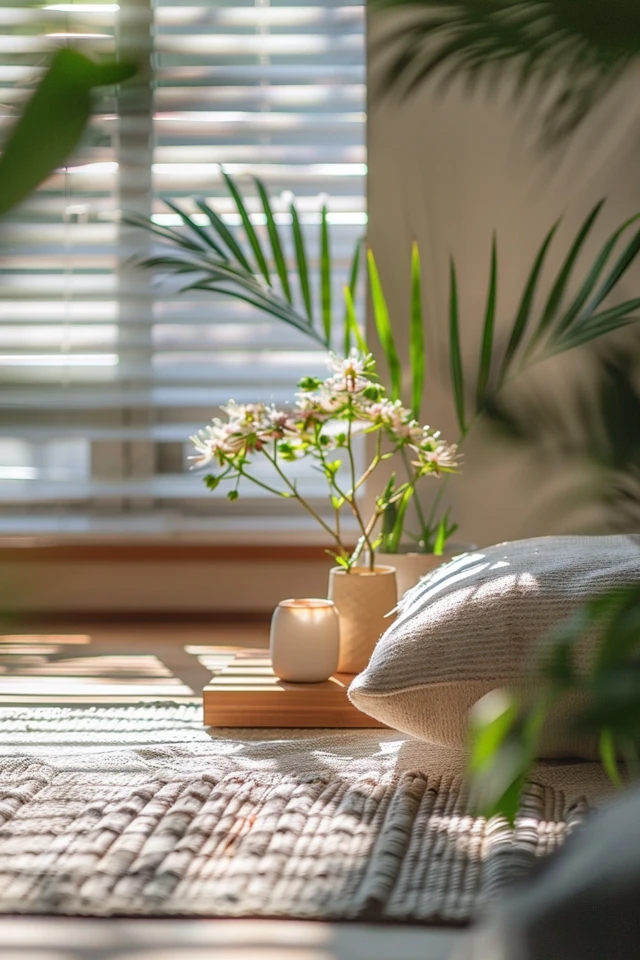
5. Maintain a Clutter-Free Environment
A clutter-free environment is essential for a calming yoga room. Keeping the space organized and free of distractions can help you focus on your practice and achieve a sense of peace.
Declutter Regularly: Make it a habit to declutter the room regularly. Remove any items that are not essential to your yoga practice and keep surfaces clear. A tidy space promotes a clear mind.
Storage Baskets: Use storage baskets to keep small items organized. Baskets can be placed on shelves or under furniture to keep the room looking neat and tidy.
Minimal Decor: Keep decor to a minimum to avoid visual clutter. Choose a few meaningful items to display and avoid overcrowding the space with too many decorations.
Cable Management: Use cable management solutions to keep cords and wires out of sight. This can help reduce visual clutter and create a cleaner look.
Designated Zones: Create designated zones for different activities within the room. For example, have a specific area for meditation, another for yoga practice, and a separate space for relaxation. This can help keep the room organized and functional.
Conclusion
Creating a yoga vibe room that serves as a calming retreat involves thoughtful design and careful consideration of various elements. By incorporating natural elements, choosing calming colors and soft lighting, using multi-functional furniture, adding personal touches, and maintaining a clutter-free environment, you can transform any room into a serene sanctuary for your yoga practice.
As an architect and interior designer, I believe that a well-designed space can significantly enhance your well-being and quality of life. A dedicated yoga room not only provides a peaceful place for physical practice but also serves as a retreat for mental and emotional rejuvenation. Embrace the process of designing a space that reflects your personal style and meets your practical needs. With these ideas, you can create a yoga room that is both beautiful and functional, offering a true escape from the stresses of daily life.
Inspirational Pictures
